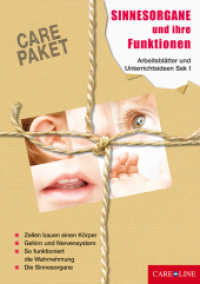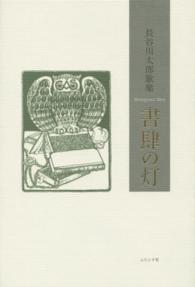- ホーム
- > 洋書
- > ドイツ書
- > Mathematics, Sciences & Technology
- > Mathematics
- > miscellaneous
Full Description
This book proposes contributions to various problems in the field of topological analysis of musical data: the objects studied are scores represented symbolically by MIDI files, and the tools used are the discrete Fourier transform and persistent homology. The manuscript is divided into three parts: the first two are devoted to the study of the aforementioned mathematical objects and the implementation of the model. More precisely, the notion of DFT introduced by Lewin is generalized to the case of dimension two, by making explicit the passage of a musical bar from a piece to a subset of Z/tZxZ/pZ, which leads naturally to a notion of metric on the set of musical bars by their Fourier coefficients. This construction gives rise to a point cloud, to which the filtered Vietoris-Rips complex is associated, and consequently a family of barcodes given by persistent homology. This approach also makes it possible to generalize classical results such as Lewin's lemma and Babitt's Hexachord theorem. The last part of this book is devoted to musical applications of the model: the first experiment consists in extracting barcodes from artificially constructed scores, such as scales or chords. This study leads naturally to song harmonization process, which reduces a song to its melody and chord grid, thus defining the notions of graph and complexity of a piece. Persistent homology also lends itself to the problem of automatic classification of musical style, which will be treated here under the prism of symbolic descriptors given by statistics calculated directly on barcodes. Finally, the last application proposes a encoding of musical bars based on the Hausdorff distance, which leads to the study of musical textures.
The book is addressed to graduate students and researchers in mathematical music theory and music information research, but also at researchers in other fields, such as applied mathematicians and topologists, who want to learn more about mathematical music theory or music information research.
Contents
1 Introduction.- Part I The two-dimensional Discrete Fourier Transform.- 2 The DFT for modeling basic musical structures.- 3 Generalization of theoretical results.- Part II Persistent homology on musical bars.- 4 Mathematical background.- 5 Musical scores and filtration.- Part III Musical applications.- 6 The DFT as a metric on the set of notes and chord.- 7 Harmonization of Pop songs.- 8 Classification of musical style.- 9 A different approach: the Hausdorff distance.- 10 Conclusion and perspectives for future research.








